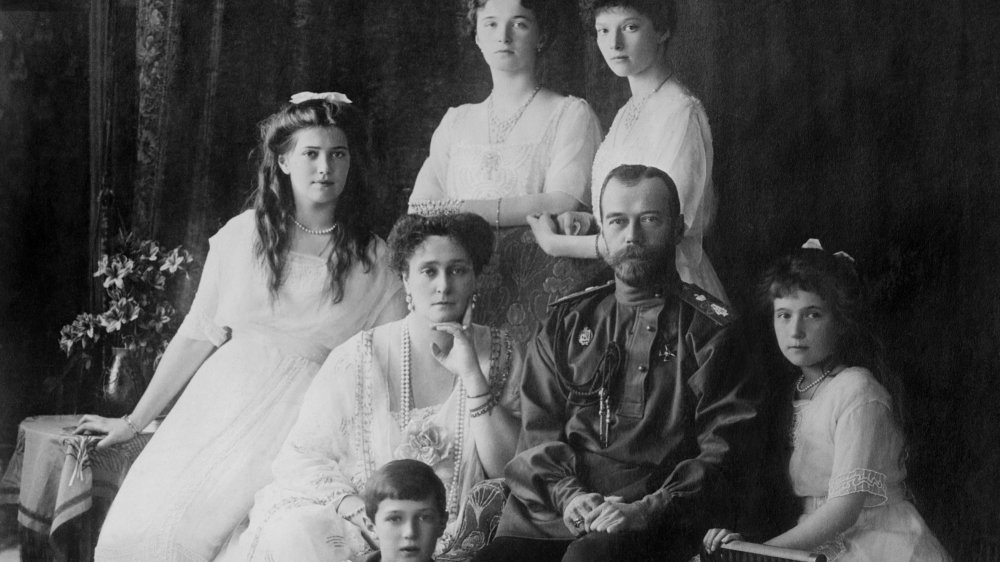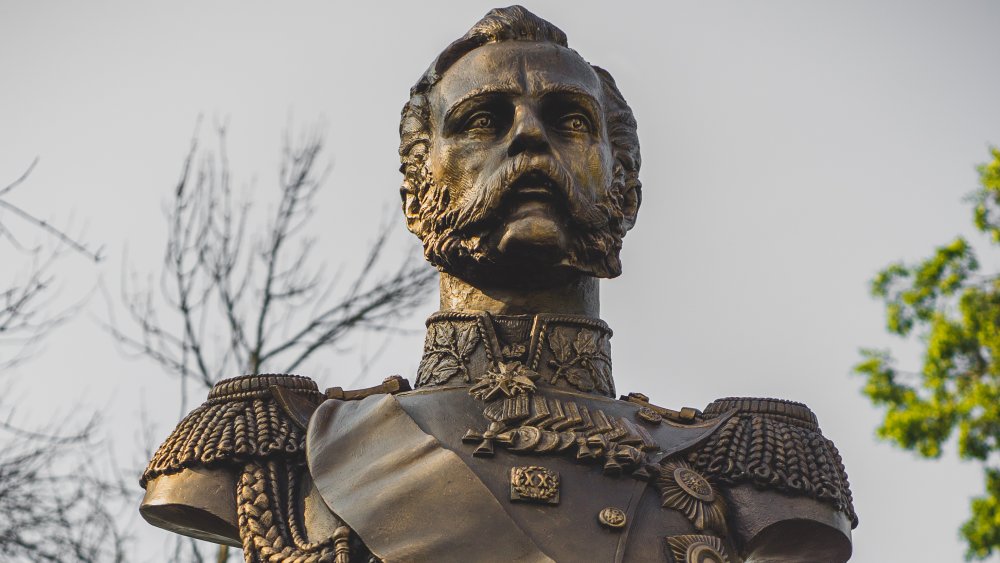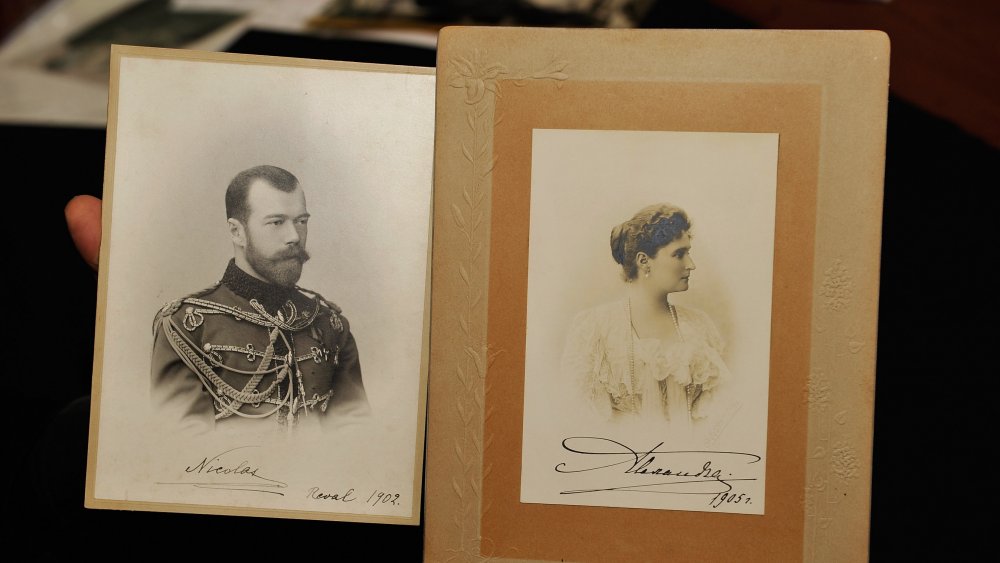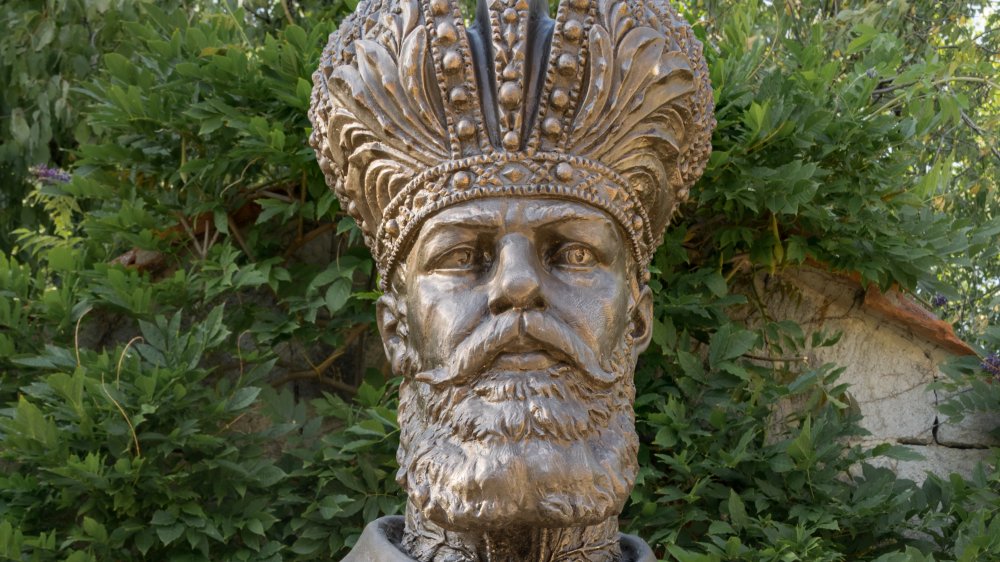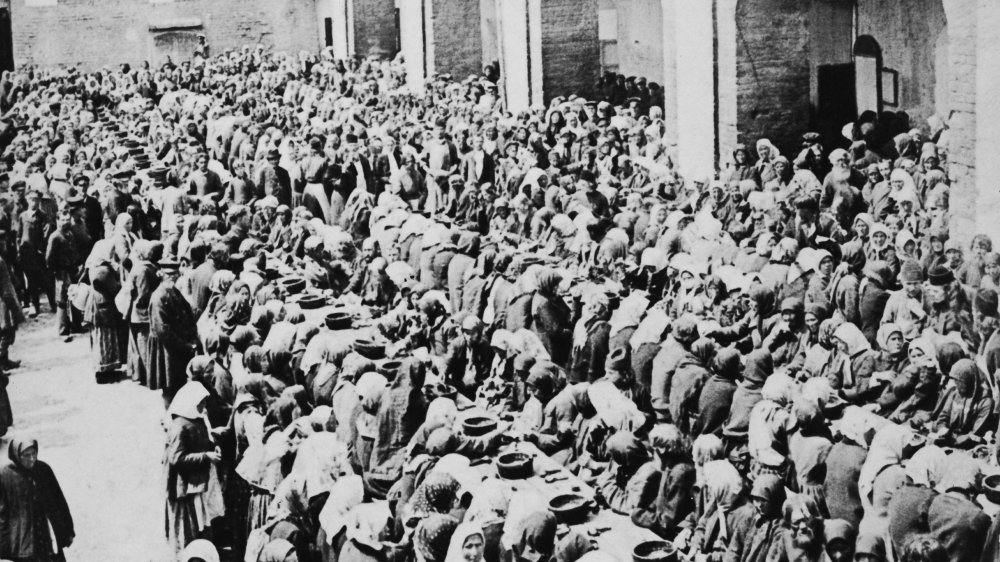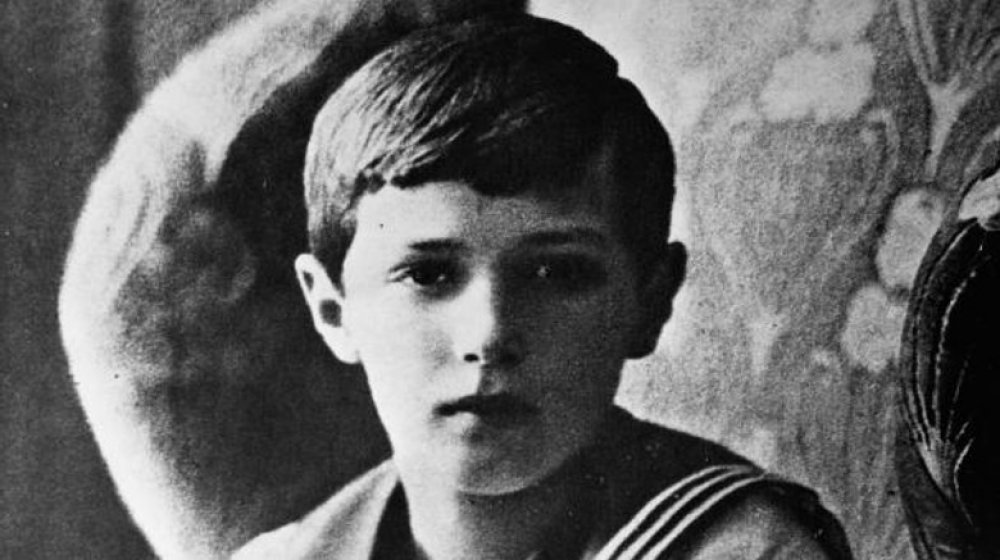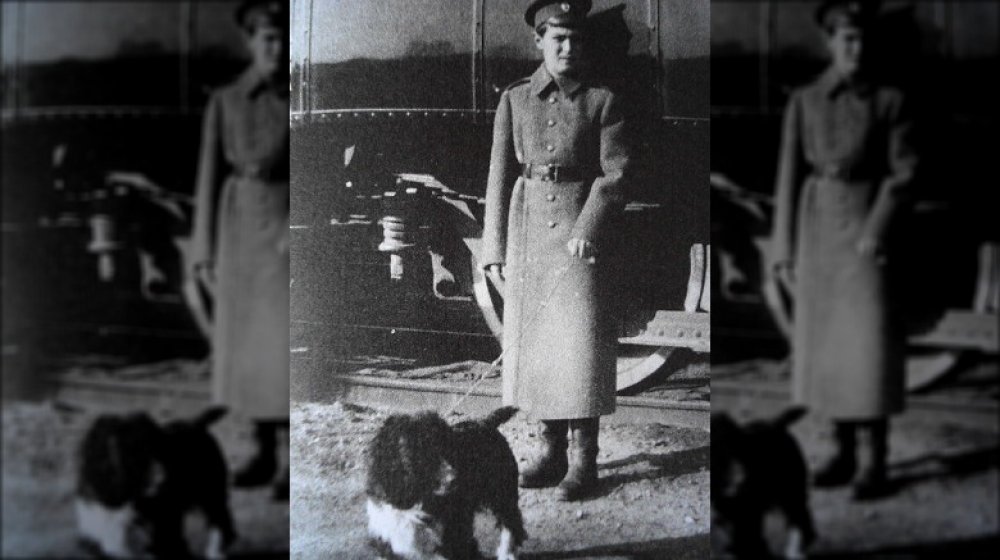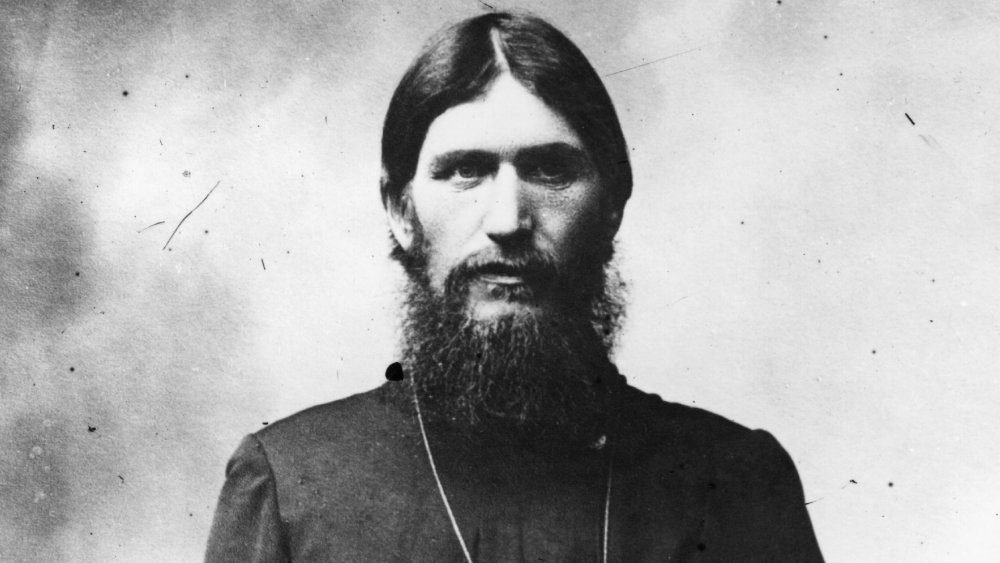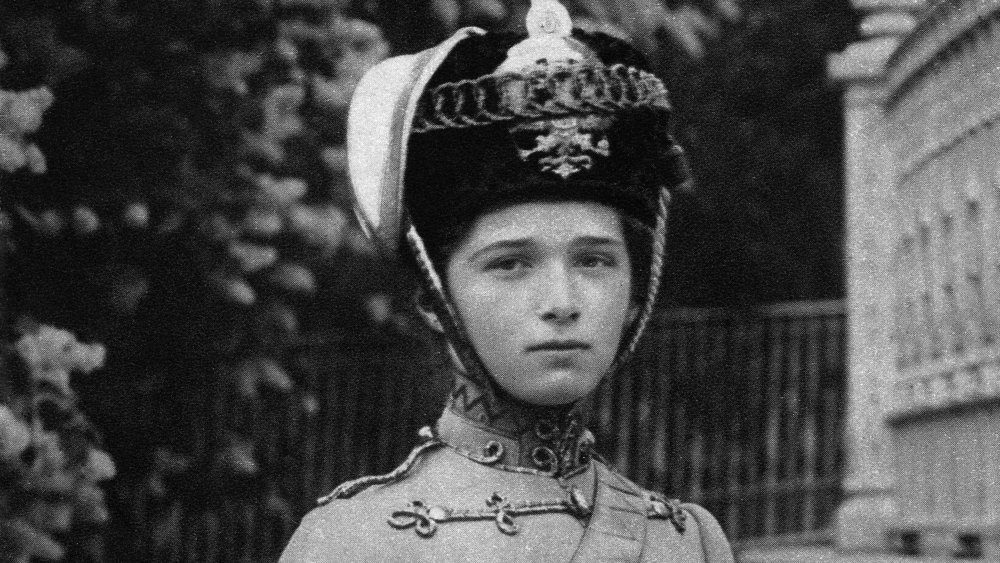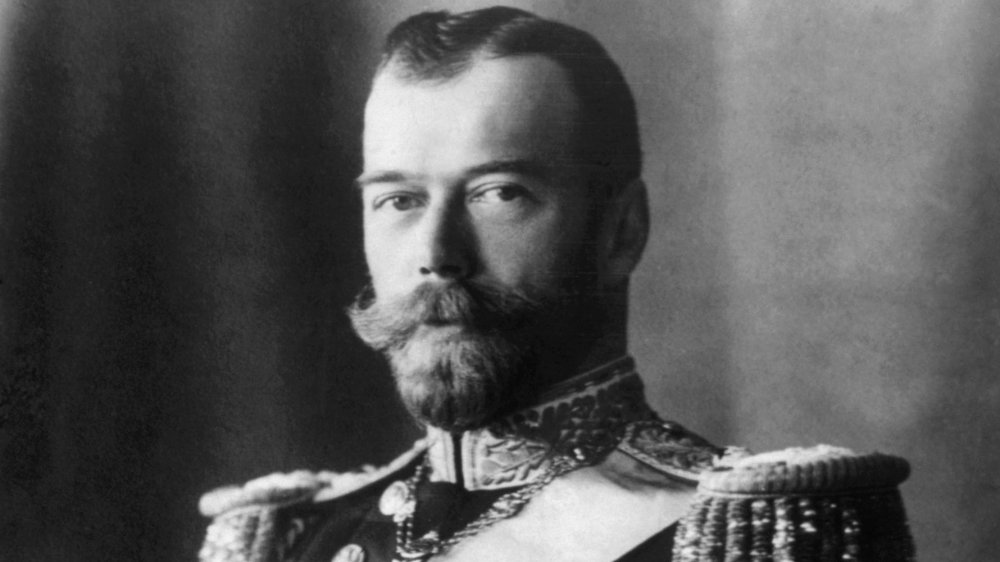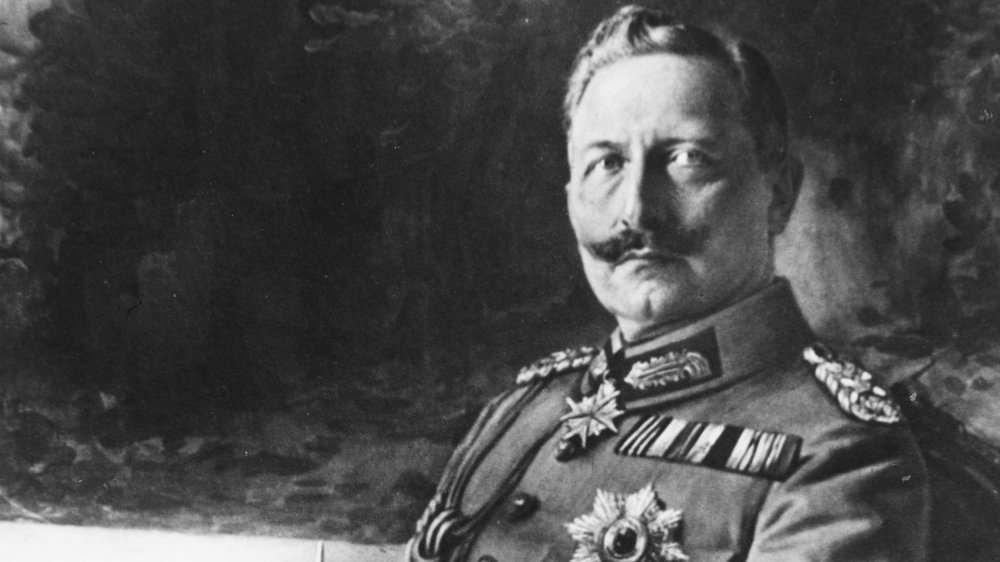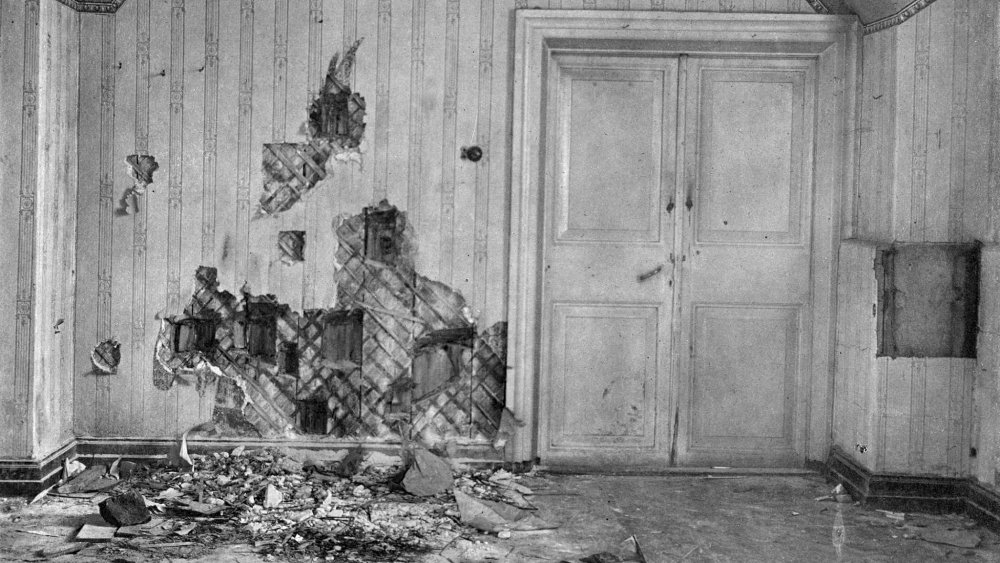The Tragic Real-Life Story Of The Romanovs
It might seem like Vladimir Putin has been running Russia forever, but compared to other men and women who've ruled the Motherland, he's barely getting started. For example, the Romanov family collectively ruled the Russian Empire for more than three centuries, transforming it from a tsardom into an empire that once controlled about 15 percent of all the land on Earth. That right there is quite a bit of influence.
But despite their dizzying success and power, the Romanov family's story ended in 1918 when Emperor Nicholas II, Empress Alexandra, and their five children (as well as the servants who'd accompanied them into imprisonment after the February Revolution) were executed by their Bolshevik captors. But that was just the final, brutal act for a family with a history of heartbreak and loss. From health issues and troubled romances to con artists and assassinations, here's the tragic real-life story of the Romanovs, the last imperial rulers of Russia.
Nicholas II's grandfather was assassinated
Russian political history — heck, Russian history in general — has been marked by exceptional violence, but by the 19th century, things seemed to have stabilized somewhat. Emperor Alexander II ascended to the throne in 1855 and recognized the need for change in a country that was crippled by its aging political structure and outdated economy. Alexander's greatest move was the emancipation of the serfs (peasants who were locked to a specific piece of land for life) in 1861, and he made other moves in an attempt to modernize his empire.
As Alexander grew older, however, he grew more conservative and reacted to any attempts to limit his power with brutal repression, giving rise to a lot of anti-imperial sentiment. According to the New York Daily News, there were three attempts to assassinate Alexander before 1881, which all failed ... but Russian revolutionaries can be a determined breed. A new revolutionary group, the People's Will, formed in 1880 and hit on a brilliant idea — suicide bombing using the relatively new invention called dynamite. It took two bombs, but the plan worked. Surprisingly, as The New York Times notes, one of the key architects of the plot was Sophia L. Perovskaya, a descendant of Russia's first emperor, Peter the Great. Perovskaya was hanged for the crime along with her co-conspirators, and she later became a hero to the Bolsheviks.
Their families tried to keep Nicholas and Alexandra apart
Nicholas II, destined to be emperor of all Russia, met his future wife when she was just 12 years old (he was 16). Victoria Alix Helena Louise Beatrice was a German princess, part of the House of Hesse and a favorite of her grandmother, Queen Victoria of England. As historian and author Lisa Waller Rogers notes, their love letters were the stuff of romantic legend, and Nicholas wrote in his diary at one point, "It is my dream to one day marry Alix H. I have loved her for a long time."
If Nicholas and Alix had been regular folks, this might've been an easy match, but as high-ranking royals, both their families opposed the relationship. Nicholas' father, Alexander III, disliked his cousin Kaiser Wilhelm and was angry about what he saw as Germany's machinations against the Russians, and Alix's family considered Russia to be a backwater empire. In fact, Alix herself refused to contemplate converting to the Russian Orthodox Church, insulting future subjects. For years the two families worked hard to keep the two apart, and it wasn't until Alexander III was on his deathbed that he finally gave his permission to Nicholas to ask Alix to marry him, which they finally did in 1894. Alix compromised and converted, becoming Empress Alexandra Feodorovna, but the Russian people never quite accepted her, and the distrust of her German roots continued to fester throughout her life.
Nicholas was unprepared to be emperor
Nicholas II's father, Alexander III (pictured), took the throne after the assassination of Alexander II. Although he'd been a loyal and supportive heir while his father lived, he held much more conservative beliefs, and once he became emperor himself, he immediately began working to reverse many of his father's liberal moves. At the same time, Alexander stood out as emperor by not embroiling Russia in any major conflicts during his decade-plus on the throne, and he proved to be a masterful ruler in terms of building up his country and developing it economically. There was even hope that Russia would soon rival Western countries in terms of stability and influence.
Then, in 1894, when he was just 49 years old (and his heir, Nicholas, was just 26), Alexander became ill with what was eventually diagnosed as nephritis of the kidneys (rumors that Alexander was poisoned persisted for a century, but they were debunked when his body was exhumed in 2018). He died in November 1894, and Nicholas became the new emperor despite, as author and historian Michael Paterson says, being "caught completely unprepared." Nicholas put his faith in God, but he never shook the feeling of inadequacy, and his rule proved he was right to have his doubts.
Nicholas II's coronation caused a disaster
Nicholas II might've had some clue about what was to come for him and his empire pretty early on. Although Nicholas officially became emperor upon the death of his father in 1894, his official coronation (along with Alexandra's) didn't occur until 1896. It was a lavish affair held in Dormition Cathedral in the Moscow Kremlin, and ironically, it was one of the most elaborate Russian coronations ever organized, considering that it was also the last.
Historian Marc Ferro notes that after the ceremony, Nicholas and the rest of the royal entourage went on a procession around the city, as was tradition, and as soon as the procession passed, thousands of people assembled on Khodynka Field, expecting the traditional gifts to be distributed by the new emperor. But there were rumors that not enough gifts had been prepared for the size of the crowd, and people began to push forward in an attempt to ensure they received a gift ... and disaster struck when panic swept the people, who rushed forward and trampled their neighbors underfoot. When the dust cleared, 1,282 people were dead, with as many as 20,000 injured. Not exactly the way Nicholas wanted to begin his reign, and when a strange hailstorm struck the city of Nizhny Novgorod when Nicholas visited a few days later, the bad omens seemed to be piling up for the new ruler.
The youngest Romanov suffered from hemophilia
Nicholas and Alexandra had four children by 1901,and they were all girls, leaving Nicholas worried about an heir. When their son, Alexei, was born in 1904, it seemed like an answer to their prayers, but according to Russia Beyond, it was quickly obvious that Alexei suffered from what was sometimes called "the royal disease" — hemophilia. That meant Alexei's blood didn't clot properly, making any injury or bruise a potentially life-threatening disease. It'd been known that Empress Alexandra carried the genetic defect that led to hemophilia — it was one of Alexander III's objections to the marriage, in fact — but Alexei had initially appeared healthy and normal.
However, just a few months later, he exhibited the first symptoms, and it led to a miserable life. First, there was the physical suffering of the disease. One of the Empress' maids once said, "It was endless torture for the boy and for each of us ... he was screaming from the pain all the time." As a result of the danger presented by his disease, Alexei was often confined to bed and even carried from room to room to ensure he didn't injure himself. He was isolated and denied any semblance of a normal childhood. In fact, for much of his short life, his only real companion was his dog, Radnost (which means "Joy" in English).
The Romanov family dog was heartbroken
Alexei's loyal dog, Radnost, wasn't immune from the curse of tragedy that afflicted the Romanovs. Author J. Mark Powell tells the story of Radnost (whose name ironically translates to "Joy"), who he calls "history's saddest dog." According to Powell, Alexei and Radnost were known to go everywhere together, and there are numerous photographs of Alexei and Radnost that show a boy able to be normal for short moments as he plays with his loving, loyal companion.
When the Romanovs were initially removed from Moscow following the February Revolution, they were held in relative comfort with a staff of servants and their pets. But when the Bolsheviks took power and executed the royal family, their pets were killed as well ... but not Radnost, who'd gone outside to explore, which saved his life. Radnost spent some time on the streets trying to survive until a soldier improbably recognized him and rescued him. Radnost was eventually given to the British royal family and lived his final years at Windsor Castle. He was reportedly a sad dog given to spending hours looking out the windows, as if searching the horizon for the return of his beloved master.
The Romanovs fell under the spell of Rasputin
The fact that Alexei, Nicholas and Alexandra's only son — and heir to the throne — suffered from hemophilia was a constant source of anxiety. Their religious faith was a great comfort but also left them vulnerable to one of the greatest manipulators of all time, Grigori Rasputin. According to Smithsonian magazine, Rasputin rose from an obscure peasant to one of the most influential figures in the emperor's court when he seemed to miraculously heal Alexei during a serious health crisis, convincing the emperor and empress that he had a holy power. As Smithsonian notes, however, modern medical experts believe Rasputin got lucky. By ordering the doctors to leave Alexei alone, he stopped them from administering aspirin, which is now known to exacerbate the symptoms of hemophilia.
At any rate, Rasputin was in, and his influence proved disastrous. When Nicholas took personal command of the Russian army during World War I following a series of military disasters, Alexandra took on more and more influence at home, and Rasputin was there, whispering in her ear. Their decisions, as The Atlantic explains, sowed chaos on the domestic front even as Nicholas' military incompetence worsened the war effort, setting up the conditions that would eventually topple the emperor and lead to the death of the Romanovs. Even Rasputin's brutal murder in 1916, a desperate attempt to remove his influence, couldn't right the ship.
Olga lost out on true love
The Romanovs were the rulers of the Russian Empire and one of the wealthiest and most powerful families in the world in the early 20th century, but they were also a family. The four Romanov daughters were incredibly privileged, but they were constrained by traditions and rules that prescribed the path of their lives, especially their love lives. The marriage of an imperial princess was as much a political consideration as a romantic one, and true love matches like Nicholas and Alexandra's were rare, as their eldest daughter, Grand Duchess Olga Nikolaevna, discovered.
According to author Helen Rappaport, while living in Tsarskoe Selo and working at the hospital there during the war, Olga met an injured soldier named Dmitri Shakh-Bagov, usually called Mitya, and fell in love with him. This was, of course, a completely unsuitable match for a Russian princess, and Olga's family opposed the relationship in every way they could, even though, according to Rappaport, Olga "never expressed any interest in any grand dukes or princes." The lovers were doomed by more than their stations, of course. Mitya was eventually sent back to the front, and he and Olga never saw each other again. She was, of course, executed with her family in 1918, and the last possible mention of Mitya came in 1920 when he might've been fighting the Red Army.
Nicholas thought he was saving the country and his family
The link between Nicholas' decision to abdicate the throne and the tragic deaths of the entire imperial family seems inevitable with historical hindsight, but it probably wasn't so clear at the time. It's important to note that Nicholas initially abdicated in favor of his son, Alexei, but when advised that this put the young boy in danger, he switched to his brother, Grand Duke Michael. So he clearly expected the autocracy to continue, and Smithsonian magazine notes that he believed he and his family would be able to retire to their estates in the Crimea as if on extended vacation.
In fact, according to historian Richard Pipes, Nicholas actually thought abdication was the safe choice. He was convinced by his generals and advisers that the mounting revolutionary fervor would spread to the troops in the field if he didn't make the move, leading to mass mutinies. Tragically, the decision that seemed like the wise, responsible thing to do set off a chain reaction that led to the October Revolution, the rise of the Bolsheviks, and the eventual murder of Nicholas and his family, the very people he'd given up his crown to protect.
The other royals abandoned the Romanovs
Perhaps the most tragic aspect of the Romanov family's horrifying end is the way their royal cousins all abandoned them. See, the royal families of Europe and Russia were all related to each other after centuries of intermarriage. Emperor Nicholas II was first cousin to King George V of England and third cousin to Kaiser Wilhelm of Germany, and his wife, Alexandra, was Queen Victoria's granddaughter. And initially, it seemed like the Romanovs' various powerful relations would save them. George V set plans in motion to have them brought to England, and Wilhelm — who'd recently confirmed a treaty with the Bolsheviks — intended to use his influence to safeguard the imperial family and possibly bring them to Germany.
But in both cases, political realities soon trumped family ties. George realized that sentiment in England was strongly against Nicholas and especially his German wife, and Wilhelm's intentions were opposed by his government, which feared it would hurt their chances to turn the tide of World War I in their favor. Other royals expressed varying degrees of concern, but none actually did anything to help their stranded relations, who remained prisoners of the Bolsheviks until that fateful night when they were unceremoniously gunned down.
Their deaths were brutal
The idea of being dragged out of bed and shot is horrific enough, but the actual execution of the Romanovs was worse than you might think. And the Romanovs weren't completely blind to the danger they were in. Historian Simon Sebag Montefiore noted that when Nicholas abdicated, they took the precaution of sewing their priceless jewels into special garments in case they needed to self-fund an escape or a new life. But when they were roused from sleep and brought to the room where they died (pictured), many of the soldiers tried to avoid shooting the young girls, and so they riddled Nicholas and Alexandra with bullets.
When they finally did turn their guns on the girls, those aforementioned gems hidden in their clothes offered some protection. Bullets ricocheted around, and most of them survived the volley and had to be stabbed to death by the soldiers using their bayonets. It took a long 20 minutes to finish killing everyone, and the confusion allowed grifters and con artists to pose as Princess Anastasia for decades, claiming to have survived the execution or to have been rescued by sympathetic soldiers. When the killers were done, the Romanovs, once one of the most powerful families in the world, were buried in unmarked graves. Their bodies weren't discovered until 1979.
Even in death, tragedy follows the Romanovs
The Romanovs were shot to death in a bloody, incompetent execution carried out by their nervous Bolshevik jailers when pro-imperialist forces got too close. Writer and historian Simon Sebag Montefiore tells us that after the horrifying slaughter, their bodies were stripped naked, their valuables stolen, and their bodies dumped in nearby mine shafts, which proved too shallow to hide them. Nervous about the evidence, the executioners spent days dismembering the bodies and soaking them in acid, then buried them in separate, unmarked graves.
But even then, their suffering wasn't over. When the bodies of Nicholas, Alexandra, Olga, Tatiana, and Anastasia were discovered in 1979, their identities were confirmed by DNA testing, and they were eventually reburied in the family crypt. But in 2007, two more bodies — confirmed to be Alexei and Maria — were discovered, but the Russian Orthodox Church challenged the identification, taking possession of the remains and prompting the government to exhume Nicholas and Alexandra and even Nicholas' father, Alexander III. The official investigation into their murder was re-opened, and the question of whether the Romanovs will ever be allowed to be truly at rest remains unanswered.
